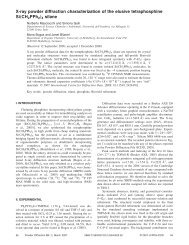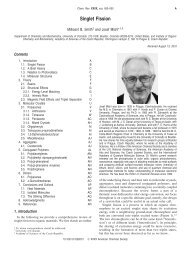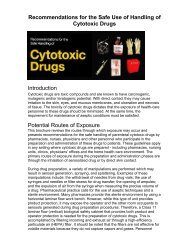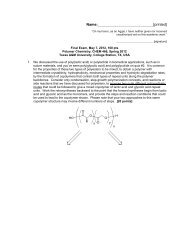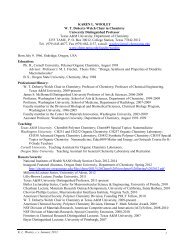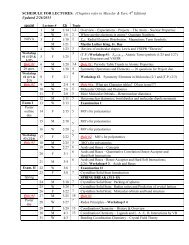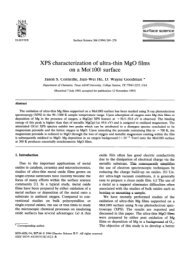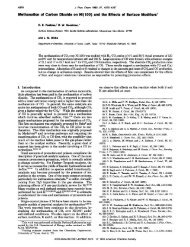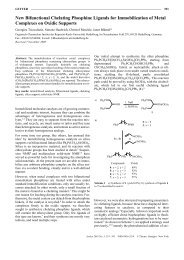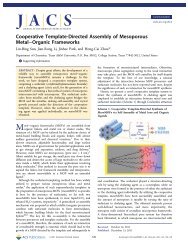Radical salts of TTF derivatives with the metal–metal bonded [Re2Cl8]
Radical salts of TTF derivatives with the metal–metal bonded [Re2Cl8]
Radical salts of TTF derivatives with the metal–metal bonded [Re2Cl8]
Create successful ePaper yourself
Turn your PDF publications into a flip-book with our unique Google optimized e-Paper software.
86 E.W. Reinheimer et al. / Journal <strong>of</strong> Molecular Structure 890 (2008) 81–89<br />
conducted at 110 ± 2 K <strong>with</strong> graphite monochromated radiation<br />
and were corrected for Lorentz and polarization effects. The Siemens<br />
SAINT s<strong>of</strong>tware package was used to integrate <strong>the</strong> frames.<br />
The program SADABS was used to correct for absorption effects<br />
[28,29]. The structures were solved by direct methods by <strong>the</strong> use<br />
<strong>of</strong> <strong>the</strong> SHELXS-97 program in <strong>the</strong> Bruker SHELXTL v5.1 interface<br />
in <strong>the</strong> XSEED s<strong>of</strong>tware package [30–32]. The SHELXL-97 program<br />
was used to refine all non-hydrogen atoms <strong>with</strong> anisotropic <strong>the</strong>rmal<br />
parameters by full matrix least squares calculations on F 2<br />
[33]. Hydrogen atoms were inserted at calculated positions and<br />
constrained <strong>with</strong> isotropic <strong>the</strong>rmal parameters. The solid-state<br />
structures for (1 2CH 3CN), (2 6CH 2Cl 2), 3 and 4 are shown in Figs.<br />
1–4. Crystallographic information is summarized in Tables 1 and<br />
2. Relevant bond distances are presented in Tables 3–6. The central<br />
Fig. 9. Projection <strong>of</strong> <strong>the</strong> crystal structure <strong>of</strong> 3 in <strong>the</strong> bc plane.<br />
Fig. 10. Projection <strong>of</strong> <strong>the</strong> crystal structure <strong>of</strong> 3 in <strong>the</strong> ac plane.<br />
C@C bond and C–S bonds are <strong>the</strong> most susceptible to <strong>the</strong> oxidation<br />
state <strong>of</strong> <strong>the</strong> donor and have been used by Coppens and coworkers<br />
to develop an empirical relationship that can be used to calculate<br />
<strong>the</strong> overall oxidation state <strong>of</strong> <strong>the</strong> donor molecule [34]. Calculated<br />
average charges for <strong>the</strong> chalc<strong>of</strong>ulvalenium cations in <strong>the</strong> compounds,<br />
determined via this method, are listed in Table 7.<br />
2.3. Transport properties<br />
Electrical conductivity was measured <strong>with</strong> <strong>the</strong> four probe<br />
technique using a Quantum Design PPMS equipment in <strong>the</strong> temperature<br />
range 300–220 K on single crystals <strong>of</strong> (1 2CH 3CN) and 3<br />
(below ca. 220 K <strong>the</strong> resistance <strong>of</strong> <strong>the</strong> samples was higher than<br />
10 MX, <strong>the</strong> limit <strong>of</strong> our measurement). The contacts between


![Radical salts of TTF derivatives with the metal–metal bonded [Re2Cl8]](https://img.yumpu.com/10115211/6/500x640/radical-salts-of-ttf-derivatives-with-the-metal-metal-bonded-re2cl8.jpg)
